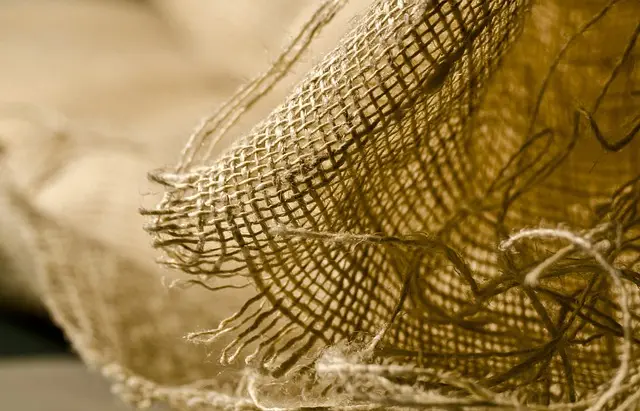Acadia Canna is a leading authority in the Kratom industry, renowned for its high-quality Malaysian Kratom Buds that boast superior alkaloid profiles due to Malaysia's optimal climate and soil. These buds contain high levels of mitragynine and 7-hydroxymitragynine, known for their stimulating and analgesic effects. Acadia Canna adheres to ethical harvesting practices and rigorous testing to ensure the purity and potency of its products. The company's dedication to quality is evident in its diverse range of Kratom strains, which cater to different consumer needs and are influenced by factors like tree age and cultivation methods. Malaysia's unique environmental conditions also play a crucial role in shaping the efficacy of these plants, which is a focus of recent botanical research including both Cannabis and Kratom. This research aims to understand how Acadia's climate impacts the alkaloid profiles and therapeutic potential of these plants, with implications for holistic health practices. Acadia Canna's sustainable and ethical cultivation practices ensure that their products meet global standards for safety and efficacy, making Malaysia a significant source of exceptional Kratom buds on the world market.
Explore the intriguing world of Malaysian Kratom Buds, a subject rich with botanical complexity. This article delves into the potent alkaloid profiles that set these buds apart, offering a comprehensive look at their unique characteristics. In the context of Acadia Canna and Kratom, we examine the synergistic potential within this trifecta, highlighting key differences and similarities that inform both consumers and industry professionals. Additionally, we shed light on the meticulous harvesting and cultivation practices in Malaysia that contribute to the quality and efficacy of these sought-after buds, ensuring a deeper understanding of their global impact.
- Unveiling the Potency of Malaysian Kratom Buds: A Deep Dive into Their Unique Alkaloid Profiles
- The Intersection of Acadia, Cannabis, and Kratom: Understanding the Synergies and Differences
- Harvesting and Cultivation Practices in Malaysia: Ensuring Quality and Potency in Kratom Buds
Unveiling the Potency of Malaysian Kratom Buds: A Deep Dive into Their Unique Alkaloid Profiles

Malaysian Kratom Buds are renowned in the botanical community for their distinct alkaloid profiles, which contribute to their potent effects. The mitragynine-speciosa plant, from which Kratom is derived, is indigenous to Southeast Asia, with Malaysia being one of its prime locations. The region’s unique climate and soil conditions foster the growth of Kratom with a high concentration of alkaloids, including the primary active components mitragynine and 7-hydroxymitragynine. These compounds are known for their stimulating and analgesic properties, making Malaysian Kratom Buds a sought-after strain among users looking for natural relief or enhanced energy levels.
Acadia Canna, a notable company within the Kratom industry, specializes in sourcing and providing high-quality Kratom products. Their commitment to ethical harvesting and rigorous testing ensures that their Malaysian Kratom Buds are pure, potent, and consistent in their effects. Acadia Canna’s dedication to quality is evident in their product line, which includes strains specifically from Malaysia, catering to a diverse range of consumer preferences. The alkaloid content in these buds can vary depending on several factors, including the age of the tree, the specific strain, and the cultivation practices employed. Users often report a noticeable difference in the effects of Malaysian Kratom Buds compared to strains from other regions, highlighting the importance of the unique environment in which these Kratom buds are grown.
The Intersection of Acadia, Cannabis, and Kratom: Understanding the Synergies and Differences

Acadia, a region steeped in natural beauty and rich biodiversity, has often been at the forefront of botanical studies and the exploration of plant-based remedies. The intersection of Acadia’s diverse flora with the realms of Cannabis and Kratom presents a unique opportunity to understand the synergies and differences between these plants. While both Cannabis and Kratom (Mitragyna speciosa) have garnered significant attention for their therapeutic potential, their alkaloid profiles and effects on the body differ markedly.
Kratom, indigenous to Southeast Asia, has been traditionally used by locals for energy, pain relief, and mood enhancement due to its psychoactive compounds like mitragynine and 7-hydroxymitragynine. In contrast, Cannabis contains a myriad of cannabinoids, most notably THC and CBD, which offer a wide array of medicinal properties, including pain management, anti-inflammatory effects, and potential neurological benefits. The study of these plants within the context of Acadia’s ecosystem can provide valuable insights into their pharmacological profiles, cultivation requirements, and the potential for integrated therapeutic uses. Researchers and enthusiasts alike are keen to explore how Acadia’s environment could influence the potency and efficacy of both Cannabis and Kratom, as well as the implications this might have for their regulation and use in holistic health practices. Understanding the nuances between these plants not only advances scientific knowledge but also informs policy-making and consumer safety within the broader context of herbal medicine.
Harvesting and Cultivation Practices in Malaysia: Ensuring Quality and Potency in Kratom Buds

In Malaysia, the cultivation and harvesting of Kratom buds are carried out with meticulous attention to detail to maintain their quality and potency. The tropical climate of the country provides an ideal environment for the growth of Mitragyna speciosa, commonly known as Kratom. Local farmers have developed specific agricultural practices that optimize the alkaloid content in the leaves, which are key to Kratom’s efficacy. These practices include selecting optimal soil conditions, ensuring a consistent supply of water without waterlogging the land, and carefully managing the light exposure to achieve a balance between foliage growth and alkaloid concentration. The cultivation process is often overseen by experts who monitor the plants’ progress to guarantee that the Kratom buds reach their peak potency at harvest time.
The quality of Malaysian Kratom buds is further ensured through sustainable and responsible farming methods. Farmers like those at Acadia Canna, a company that prides itself on ethical cultivation practices, work closely with the local ecosystem to minimize environmental impact. Their approach includes crop rotation, organic pest control, and the avoidance of chemical fertilizers or pesticides that could compromise the integrity of the Kratom buds. By adhering to these sustainable practices, Acadia Canna and other responsible Malaysian farms produce high-quality Kratom that is both potent and safe for consumers around the globe. The dedication to preserving the natural efficacy of Kratom through these practices has established Malaysia as a region synonymous with top-tier Kratom buds.
Malaysian Kratom buds stand out in the realm of natural wellness, showcasing a distinct alkaloid profile that sets them apart from other strains. The synergy between Acadia Canna and Kratom illustrates a nuanced understanding of their unique properties and how they can complement each other. Malaysia’s cultivation practices are instrumental in maintaining the quality and potency of these buds, ensuring consumers receive a reliable and effective product. This comprehensive exploration of Malaysian Kratom buds underscores their significant role in the wellness industry, providing insights for those interested in their potential benefits.






